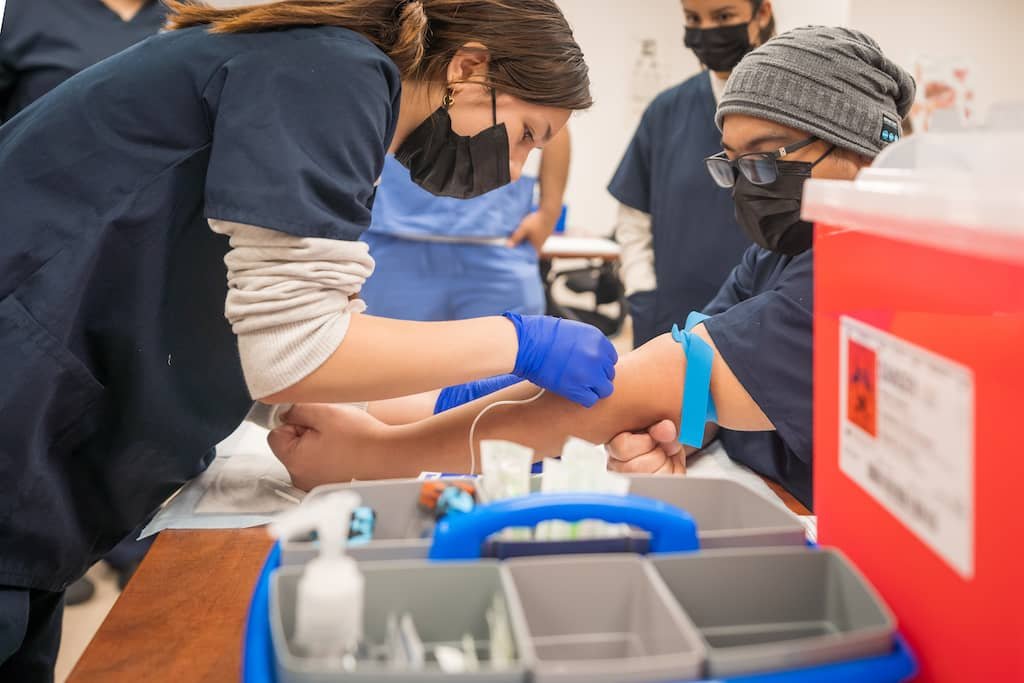Improving Phlebotomy Workflows with Digital Health Tools: Strategies and Benefits
Summary
- Hospitals can implement digital health tools to streamline phlebotomy workflows and improve patient outcomes.
- Effective implementation of digital tools requires strategic planning, training, and integration with existing systems.
- By leveraging technology, hospitals can enhance efficiency, accuracy, and Patient Satisfaction in phlebotomy services.
Introduction
In the fast-paced environment of healthcare, hospitals are constantly seeking ways to improve efficiency, reduce errors, and enhance patient care. One area that has seen significant advancements in recent years is phlebotomy, the practice of drawing blood for diagnostic purposes. With the integration of digital health tools, hospitals can streamline phlebotomy workflows, improve accuracy, and enhance the overall patient experience. In this article, we will explore the strategies hospitals can implement to effectively integrate digital health tools into their phlebotomy workflows in the United States.
Current Challenges in Phlebotomy Workflows
Before delving into the strategies for integrating digital health tools, it is essential to understand the current challenges faced by hospitals in their phlebotomy workflows. Some of the common issues include:
- Manual documentation processes leading to errors and delays.
- Inefficient communication between phlebotomists, nurses, and lab technicians.
- Patient discomfort and anxiety during blood draws.
Strategies for Effective Integration of Digital Health Tools
1. Strategic Planning
Before implementing any digital health tool, hospitals must engage in strategic planning to ensure a successful integration. Some key steps in this process include:
- Identifying the specific goals and objectives of integrating digital tools into phlebotomy workflows.
- Conducting a needs assessment to determine which tools are best suited to address the hospital's challenges.
- Developing a detailed implementation plan, including timelines, budget, and resource allocation.
2. Training and Education
Once the strategic plan is in place, hospitals must focus on training and educating staff on how to effectively use the digital health tools. This can involve:
- Providing comprehensive training sessions for phlebotomists, nurses, and other healthcare professionals involved in the blood draw process.
- Offering ongoing education and support to ensure staff are proficient in using the tools and understand the benefits they provide.
- Encouraging staff feedback and incorporating suggestions for improvement into the training program.
3. Integration with Existing Systems
Another crucial aspect of integrating digital health tools into phlebotomy workflows is ensuring seamless integration with existing hospital systems. This can be achieved by:
- Collaborating with IT departments to ensure compatibility with Electronic Health Records (EHR) and other systems.
- Testing the tools in a controlled environment before full-scale implementation to identify and address any compatibility issues.
- Establishing protocols for data sharing and communication between different departments to ensure a smooth Workflow.
Benefits of Digital Health Tools in Phlebotomy Workflows
By effectively integrating digital health tools into their phlebotomy workflows, hospitals can reap a wide range of benefits, including:
- Improved efficiency and accuracy in the blood draw process, leading to faster results and better patient outcomes.
- Enhanced communication between healthcare professionals, resulting in fewer errors and delays in the lab testing process.
- Increased Patient Satisfaction by reducing wait times, minimizing discomfort during blood draws, and providing a more seamless experience.
Conclusion
Integrating digital health tools into phlebotomy workflows is a critical step for hospitals looking to improve efficiency, accuracy, and Patient Satisfaction. By following strategic planning, training, and integration strategies, healthcare facilities in the United States can effectively harness the power of technology to enhance their phlebotomy services. With the right approach, hospitals can streamline workflows, reduce errors, and ultimately provide better care for their patients.

Disclaimer: The content provided on this blog is for informational purposes only, reflecting the personal opinions and insights of the author(s) on the topics. The information provided should not be used for diagnosing or treating a health problem or disease, and those seeking personal medical advice should consult with a licensed physician. Always seek the advice of your doctor or other qualified health provider regarding a medical condition. Never disregard professional medical advice or delay in seeking it because of something you have read on this website. If you think you may have a medical emergency, call 911 or go to the nearest emergency room immediately. No physician-patient relationship is created by this web site or its use. No contributors to this web site make any representations, express or implied, with respect to the information provided herein or to its use. While we strive to share accurate and up-to-date information, we cannot guarantee the completeness, reliability, or accuracy of the content. The blog may also include links to external websites and resources for the convenience of our readers. Please note that linking to other sites does not imply endorsement of their content, practices, or services by us. Readers should use their discretion and judgment while exploring any external links and resources mentioned on this blog.

